
Task Force 11 is a designation that has been used by the United States armed forces for two separate units.

Task Force 16 (TF16) was one of the most storied task forces in the United States Navy, a major participant in a number of the most important battles of the Pacific War.

Samuel Eliot Morison was an American historian noted for his works of maritime history and American history that were both authoritative and popular. He received his Ph.D. from Harvard University in 1912, and taught history at the university for 40 years. He won Pulitzer Prizes for Admiral of the Ocean Sea (1942), a biography of Christopher Columbus, and John Paul Jones: A Sailor's Biography (1959). In 1942, he was commissioned to write a history of United States naval operations in World War II, which was published in 15 volumes between 1947 and 1962. Morison wrote the popular Oxford History of the American People (1965), and co-authored the classic textbook The Growth of the American Republic (1930) with Henry Steele Commager.
This is a list of aviation-related events from 1943:
This is a list of aviation-related events from 1944:
This is a list of aviation-related events from 1942:

The New Guinea campaign of the Pacific War lasted from January 1942 until the end of the war in August 1945. During the initial phase in early 1942, the Empire of Japan invaded the Territory of New Guinea on 23 January and Territory of Papua on 21 July and overran western New Guinea beginning on 29 March. During the second phase, lasting from late 1942 until the Japanese surrender, the Allies—consisting primarily of Australian forces—cleared the Japanese first from Papua, then New Guinea, and finally from the Dutch colony.

Akebono was the eighteenth of twenty-four Fubuki-class destroyers, built for the Imperial Japanese Navy following World War I. When introduced into service, these ships were the most powerful destroyers in the world. They served as first-line destroyers through the 1930s, and remained formidable weapons systems well into the Pacific War.
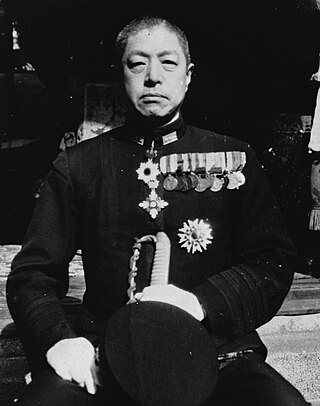
Kiyohide Shima was an admiral in the Imperial Japanese Navy during World War II.
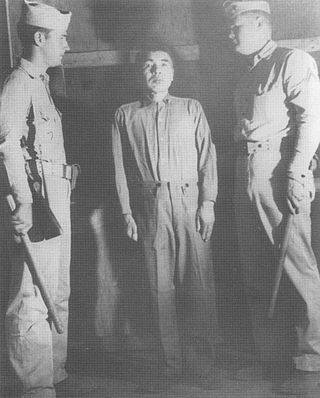
Kōsō Abe was an admiral in the Imperial Japanese Navy during World War II.
Sea Frontiers were several, now disestablished, commands of the United States Navy as areas of defense against enemy vessels, especially submarines, along the U.S. coasts. They existed from 1 July 1941 until in some cases the 1970s. Sea Frontiers generally started at the shore of the United States and extended outwards into the sea for a nominal distance of two hundred miles.
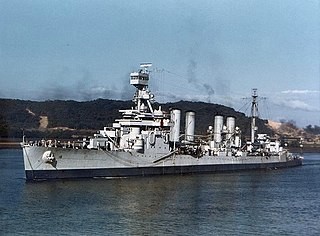
The Panama Sea Frontier was a U.S. Navy command responsible during and shortly after World War II for the defense of the Pacific and Atlantic sea approaches to the Panama Canal and naval shore facilities in the Central America region. The Sea Frontier headquarters were located in Balboa, Panama.
The SC convoys were a series of North Atlantic convoys that ran during the battle of the Atlantic during World War II.

Susumu Kimura, was an admiral in the Imperial Japanese Navy during World War II. He commanded Destroyer Squadron 10 which participated in several important naval battles at the Battle of Midway, Guadalcanal Campaign, and the Battle of Leyte Gulf.
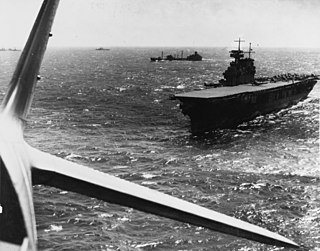
Task Force 17 (TF17) was an aircraft carrier task force of the United States Navy during the Pacific Campaign of World War II. TF17 participated in several major carrier battles in the first year of the war.

Dumbo was the code name used by the United States Navy during the 1940s and 1950s to signify search and rescue missions, conducted in conjunction with military operations, by long-range aircraft flying over the ocean. The purpose of Dumbo missions was to rescue downed American aviators as well as seamen in distress. Dumbo aircraft were originally land-based heavy bomber aircraft converted to carry an airborne lifeboat to be dropped in the water near survivors. The name "Dumbo" came from Walt Disney's flying elephant, the main character of the animated film Dumbo, appearing in October 1941.
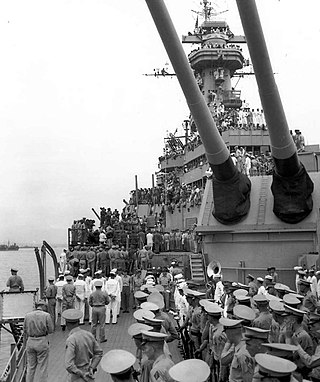
The United States Navy grew rapidly during its involvement in World War II from 1941–45, and played a central role in the Pacific War against Imperial Japan. It also assisted the British Royal Navy in the naval war against Nazi Germany and Fascist Italy. The U.S. Navy grew slowly in the years prior to World War II, due in part to international limitations on naval construction in the 1920s. Battleship production restarted in 1937, commencing with the USS North Carolina. The US Navy was able to add to its fleets during the early years of the war while the US was still neutral, increasing production of vessels both large and small, deploying a navy of nearly 350 major combatant ships by December 1941 and having an equal number under construction.
At the beginning of World War II, the Royal Navy was the strongest navy in the world, with the largest number of warships built and with naval bases across the globe. It had over 15 battleships and battlecruisers, 7 aircraft carriers, 66 cruisers, 164 destroyers and 66 submarines. With a massive merchant navy, about a third of the world total, it also dominated shipping. The Royal Navy fought in every theatre from the Atlantic, Mediterranean, freezing Northern routes to Russia and the Pacific ocean.
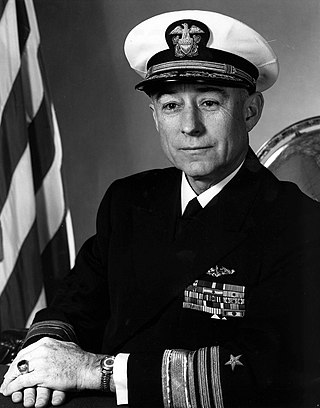
Bernard Lige Austin was a Vice Admiral of the United States Navy. His career included service in World War II, the Korean War, and the Cold War and command of submarines and surface ship forces, during which he became a distinguished combat commander of destroyers. He also commanded the United States Second Fleet, held numerous diplomatic, educational, and administrative staff positions, and a served a lengthy tour of duty as President of the Naval War College.
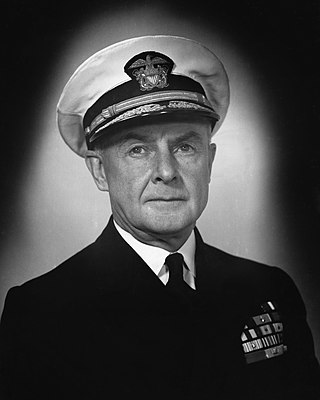
Vice Admiral Frank Jacob Lowry was an officer in the United States Navy who served in World War I and World War II. A 1911 graduate of the United States Naval Academy, he served on submarines during World War I. During World War II, he commanded the cruiser USS Minneapolis at the Battle of the Coral Sea, for which he was awarded the Navy Cross, and the Battle of Midway. He commanded the VIII Amphibious Force in the landings at Anzio and Southern France. He retired from the Navy in March 1950, and received a tombstone promotion to vice admiral due to his combat decorations.














